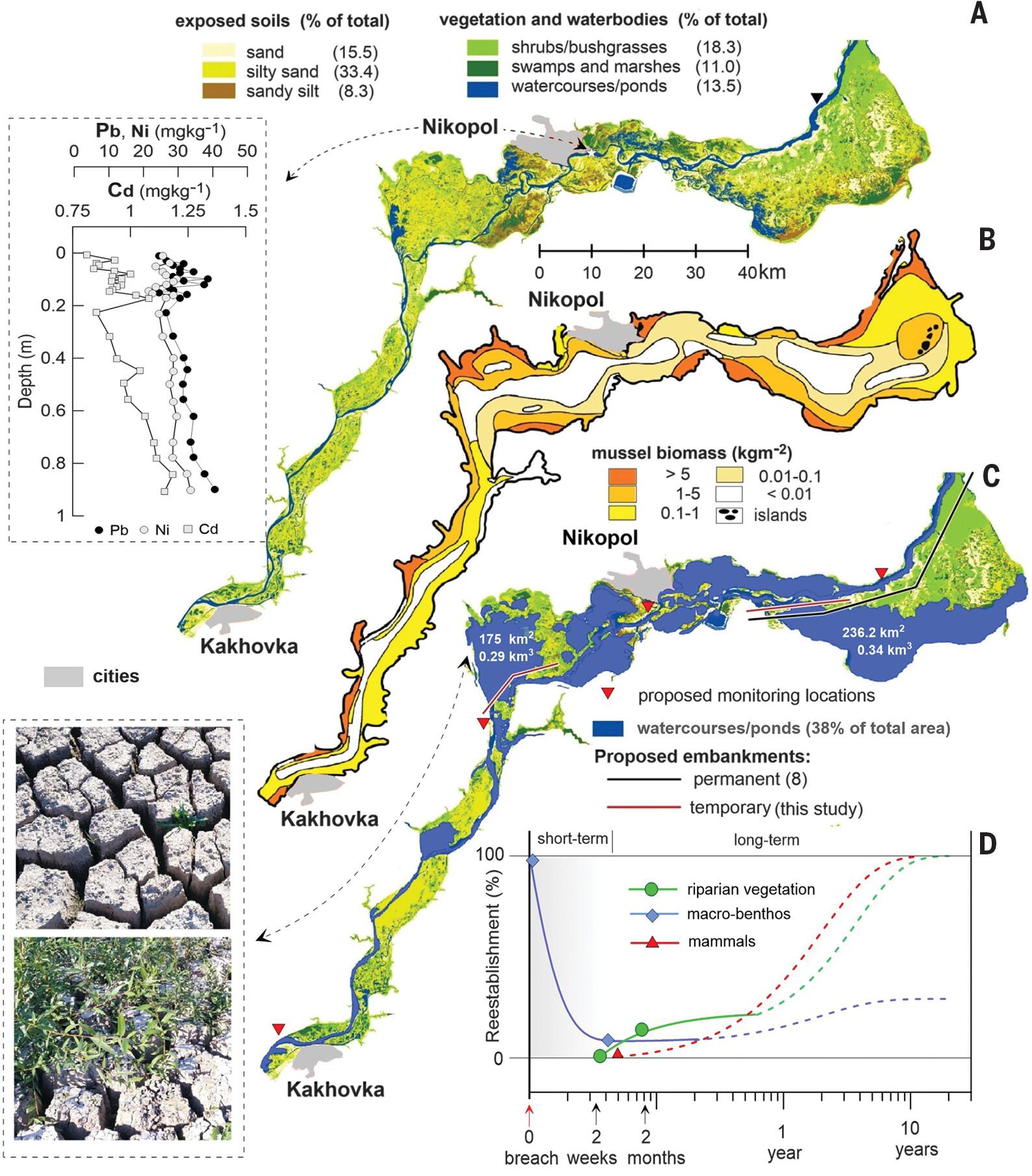乌克兰卡霍夫卡大坝因战争而破坏的环境影响
IF 45.8
1区 综合性期刊
Q1 MULTIDISCIPLINARY SCIENCES
Science
Pub Date : 2025-03-13
引用次数: 0
摘要
在俄乌战争中,高度工业化地区将水作为武器,造成了灾难性的经济和环境破坏。我们分析了军事摧毁卡霍夫卡大坝所造成的环境影响。我们将现场、遥感和建模数据联系起来,划定灾害的时空尺度,勾勒出受损生态系统重建的趋势。虽然媒体的注意力集中在洪水对社会、政治和经济的直接影响上,但我们的研究结果表明,在前水库床新暴露的沉积物中,有毒污染对淡水、河口和海洋生态系统构成了很大程度上被忽视的长期威胁。继续把水当作武器可能会给人类和环境带来更大的风险。本文章由计算机程序翻译,如有差异,请以英文原文为准。

Environmental effects of the Kakhovka Dam destruction by warfare in Ukraine
The use of water as a weapon in highly industrialized areas in the Russo-Ukrainian war has resulted in catastrophic economic and environmental damages. We analyze environmental effects caused by the military destruction of the Kakhovka Dam. We link field, remote sensing, and modeling data to demarcate the disaster’s spatial-temporal scales and outline trends in reestablishment of damaged ecosystems. Although media attention has focused on the immediate impacts of flooding on society, politics, and the economy, our results show that toxic contamination within newly exposed sediments of the former reservoir bed poses a largely overlooked long-term threat to freshwater, estuarine, and marine ecosystems. The continued use of water as a weapon may lead to even greater risks for people and the environment.
求助全文
通过发布文献求助,成功后即可免费获取论文全文。
去求助
来源期刊

Science
综合性期刊-综合性期刊
CiteScore
61.10
自引率
0.90%
发文量
0
审稿时长
2.1 months
期刊介绍:
Science is a leading outlet for scientific news, commentary, and cutting-edge research. Through its print and online incarnations, Science reaches an estimated worldwide readership of more than one million. Science’s authorship is global too, and its articles consistently rank among the world's most cited research.
Science serves as a forum for discussion of important issues related to the advancement of science by publishing material on which a consensus has been reached as well as including the presentation of minority or conflicting points of view. Accordingly, all articles published in Science—including editorials, news and comment, and book reviews—are signed and reflect the individual views of the authors and not official points of view adopted by AAAS or the institutions with which the authors are affiliated.
Science seeks to publish those papers that are most influential in their fields or across fields and that will significantly advance scientific understanding. Selected papers should present novel and broadly important data, syntheses, or concepts. They should merit recognition by the wider scientific community and general public provided by publication in Science, beyond that provided by specialty journals. Science welcomes submissions from all fields of science and from any source. The editors are committed to the prompt evaluation and publication of submitted papers while upholding high standards that support reproducibility of published research. Science is published weekly; selected papers are published online ahead of print.
 求助内容:
求助内容: 应助结果提醒方式:
应助结果提醒方式:


